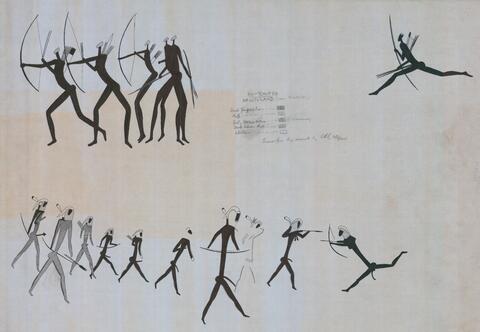Identificatie
referentie code
Titel
Datum(s)
- 30/07/1945 (Vervaardig)
Beschrijvingsniveau
Omvang en medium
Context
Naam van de archiefvormer
Biografie
Naam van de archiefvormer
Biografie
Background of the Recorder
Clarence van Riet Lowe was born on the 4 November 1894, in Aliwal North, Eastern Cape. It was in his place of birth, that Mr van Riet Lowe was introduced to Alfred Brown, an enthusiast for fossils and reptiles, entomology, prehistoric relics and Bushman paintings. It was this acquaintance that introduce van Riet Lowe to the wonders of nature, planted the seeds of interest in stone tools and rock paintings with far reaching results which he could not have foreseen. Mr van Riet Lowe was a Civil engineer by profession, and from 1923 to 1928, he was in charge of the construction of new bridges in the Free State. It was in this five year period, which he found it crucial for his career, that he supervised the construction of 89 bridges that he had the opportunity to discover over 300 prehistoric sites, mainly in the valley of the Wilger, Vals, Rhenoster, Caledon, Modder and Riet rivers. It was also during this period that a change of profession from Civil engineer to a Prehistoric Archaeologist occurred. Not only had he discovered these sites, but made important collections of artefacts which were then donated to museums in Bloemfontein, Cape Town and the University of the Witwatersrand in Johannesburg. In his interactions in the field of Prehistoric Archaeology, he interacted and collaborated with various scholars, such as Abbe Henri Breuil, A. J. H. Goodwin, with whom he produced The Stone Age Cultures of South Africa. In 1929 Van Riet Lowe had an opportunity to visit some rock art sites in the eastern Free State accompanied by Abbe Breuil. In 1937 van Riet Lowe visited rock art shelter in Northern Rhodesia, now Zimbabwe, including Nachikufu. By 1928 van Riet Lowe's reputation as a leading archaeologist was firmly established, and by 1935 it was known throughout South Africa and abroad. In 1935 he represented his Government on the International Historical Monuments Commission of the League of Nations in Geneva and two years later he represented South Africa at the International Conference on Excavations in Cairo. In 1947 van Riet Lowe took an important part on the deliberations of the First Pan African Congress on Prehistory in Nairobi and the Third Congress in Livingstone in 1954. Many Honours were conferred upon him: the King's Jubilee Medal (1935), the Queen's Coronation Medal (1954), the South African Medal of the South African Association (1943), the Medal of Voortrekker Monument Committee (1942) and of the Historical Monuments Commission (1956). Clarence van Riet Lowe died in Knysna in 1956.
archiefbewaarplaats
Geschiedenis van het archief
Directe bron van verwerving of overbrenging
Inhoud en structuur
Bereik en inhoud
Different kinds of bows are depicted in San art. From curved, comparatively straight and triple curved there are a variety of bows found in rock art.
Depiction of arrows, whether they be real or not (arrows of sickness) are quite common in rock art.
Arrows of sickness are said to be small, invisible arrows that malevolent shamans shoot into people whom they wish to make ill. The arrow points were traditionally made of bone and later of iron. Each point is distinctive; hunters recognise their own and others’ arrows. This is important because an animal belongs to the owner of the fatal arrow, and that person has the responsibility of distributing the meat equitably amongst all the people in the camp. The poison for which the San are known is placed behind the point so as not to blunt it. The poison was made from snake venom, certain plants and beetle larvae. There is no known antidote, and the San are extremely careful indeed to avoid it getting into their eyes and skin. Men carry their arrows in quivers.
Waardering, vernietiging en slectie
Aanvullingen
Ordeningstelsel
Voorwaarden voor toegang en gebruik
Voorwaarden voor raadpleging
Voorwaarden voor reproductie
Taal van het materiaal
- Engels
Schrift van het materiaal
Taal en schrift aantekeningen
Fysieke eigenschappen en technische eisen
Original size: 96.73 x 66.88cm

